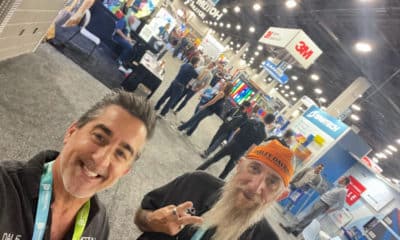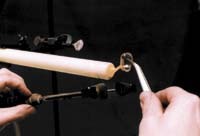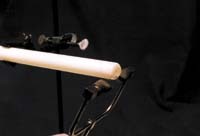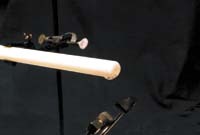The principle of cold-cathode lighting is not new. Architects increasingly use this light source due to its custom-tailored properties. Cold cathode — which is nothing more than neon tubing in a larger size — can be processed in the neon shop after some considerations and training.
In two articles, I will describe the method, requirements and pitfalls for a neon shop that wants to enter the larger tube business.
It’s simply neon
In the United States, for some unknown reason, every neon tube with a diameter larger than 15mm is called "cold cathode," and "neon" when smaller. There is no difference except size. In some European countries, where neon tubes have a standard diameter of 18 or 22mm, neon wouldn’t exist, using U.S. terminology. I will refer to cold-cathode as "big diameter neon," whether it’s used for advertising, backlighting billboards or architectural lighting.
The main purpose of a large neon tube is to generate a considerable amount of light, contrary to the main purposes of small tubes to be bent into intricate shapes and to light up in bright, saturated colors. For this reason, the amount of energy transformed requires every part of the tube and installation to be adapted for high lumen-output light generation.
Glass requirements
In the United States, large neon tubes used for lighting measure 25mm in diameter and up to 8 ft. (2.4m) in length. Therefore, you need space to handle and process larger glass. Ceilings at least 10-ft. tall are necessary to avoid touching and breaking the lamps. Ideally, your floorspace should incorporate horizontal shelves for 8-ft. boxes, plus 10 ft. to remove them. If such space isn’t available, a vertical stock rack may be an option. Cap the tubes and build a small roof on the rack’s top to prevent dust and soot from settling inside the tubes.
Handling large tubes isn’t as difficult as imagined. The tool of choice, standard in virtually every chemical laboratory, is a ring stand, with a heavy baseplate (a minimum of 8-10 lbs.) and a vertical iron rod to fasten the clamps. Use different clamp sizes, as the ones without plastic grip fingers (they get hot!) will tightly hold only a limited range of glass tubes. Always tighten the clamp thumbscrew gently when preparing a tube — if you hear a gentle crack, it’s too late. The clamp can be fastened in any direction.
For electrode splicing, place the tube parallel to the table’s long side, approximately as high as your neck when sitting in front of the table. It’s uncommon in U.S. neon shops to sit down to work glass, but for precise work on large-diameter glass, sitting gives the necessary static position. Use a height-adjustable piano stool. Every neon shop has all the other tools necessary for working large-diameter glass.
Electrode splicing
Electrodes are attached differently to large- and small-diameter tubing. Because the standard electrode size is 18mm, and the cold-cathode tube is 25mm, the tube diameter must be matched somehow to the electrode. Installing these tubes in special housings, and mounting them in the same axis next to each other to create an uninterrupted light line, require positioning the electrodes at 90



 Paula Fargo2 weeks ago
Paula Fargo2 weeks ago
 Real Deal1 week ago
Real Deal1 week ago
 Photo Gallery2 weeks ago
Photo Gallery2 weeks ago
 Projects1 week ago
Projects1 week ago
 Business Management1 week ago
Business Management1 week ago
 News24 hours ago
News24 hours ago
 News1 week ago
News1 week ago
 Dale Salamacha5 days ago
Dale Salamacha5 days ago













